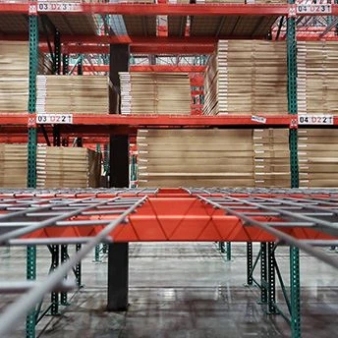Dealing with the problem of insufficient storage shelves due to an overload of goods in the warehouse can be challenging, but there are several strategies you can implement to address this issue:
Optimize Existing Shelves:
First, assess the current layout of your storage shelves. Make sure you're using the available space efficiently. Reorganize, declutter, and consolidate items to create additional space on existing shelves.
Reevaluate Inventory Management:
Review your inventory management processes. Consider implementing just-in-time inventory practices to reduce excess stock and prevent overloading your shelves in the future.
Implement a Storage Hierarchy:
Create a storage hierarchy based on the frequency of item access. Keep high-demand items on the most accessible shelves and less frequently accessed items in less accessible areas.
Vertical Space Utilization:
Utilize vertical space by adding taller shelving units or mezzanines if you have the ceiling height. This increases storage capacity without expanding the warehouse's footprint.
Implement Efficient Shelving Systems:
Consider installing high-density storage systems like pallet racking, push-back racking, or mobile shelving to make the most of your available space.
Custom Shelving Solutions:
If space is limited, explore custom shelving solutions tailored to your specific inventory and storage requirements.
Expand Warehouse Space:
If you consistently face storage shortages, consider expanding your warehouse space or leasing additional space to accommodate your growing inventory.
Off-Site Storage:
Rent off-site storage facilities or consider using third-party logistics services to store excess inventory. This can help alleviate the pressure on your primary warehouse.
Rotate Stock:
Implement a first-in, first-out (FIFO) or last-in, first-out (LIFO) inventory rotation system. This ensures older stock is used or sold before new inventory is stored.

Implement Rack and Bin Systems:
Use bin systems within the shelving units to increase the organization and efficiency of your storage.
Automation and Retrieval Systems:
Consider implementing automated storage and retrieval systems (AS/RS) or conveyor systems to maximize space and reduce manual handling.
Review Supplier Agreements:
Discuss inventory management with your suppliers and negotiate agreements that reduce lead times and the need for large buffer stock.
Upgrade Shelving Systems:
Invest in new shelving systems with higher load capacities and better space utilization features.
Regular Inventory Audits:
Conduct regular inventory audits to identify obsolete or slow-moving items that can be sold, donated, or disposed of to free up shelf space.
Warehouse Management Software (WMS):
Implement WMS to optimize inventory tracking, improve stock visibility, and facilitate better inventory control.
Employee Training:
Train warehouse staff to be efficient in handling and storing items, and ensure they follow established storage and inventory management processes.
Regular Maintenance:
Maintain and inspect your storage shelves regularly to ensure they are in good condition and to prevent damage that could reduce their capacity.
Consult with Experts:
Seek advice from warehouse design experts or consultants who can offer solutions tailored to your specific storage needs and constraints.
Dealing with insufficient storage shelves due to excessive inventory requires a combination of strategic planning, efficient use of space, and effective inventory management. It may also involve investments in shelving systems or warehouse expansion if necessary to accommodate your growing storage needs.